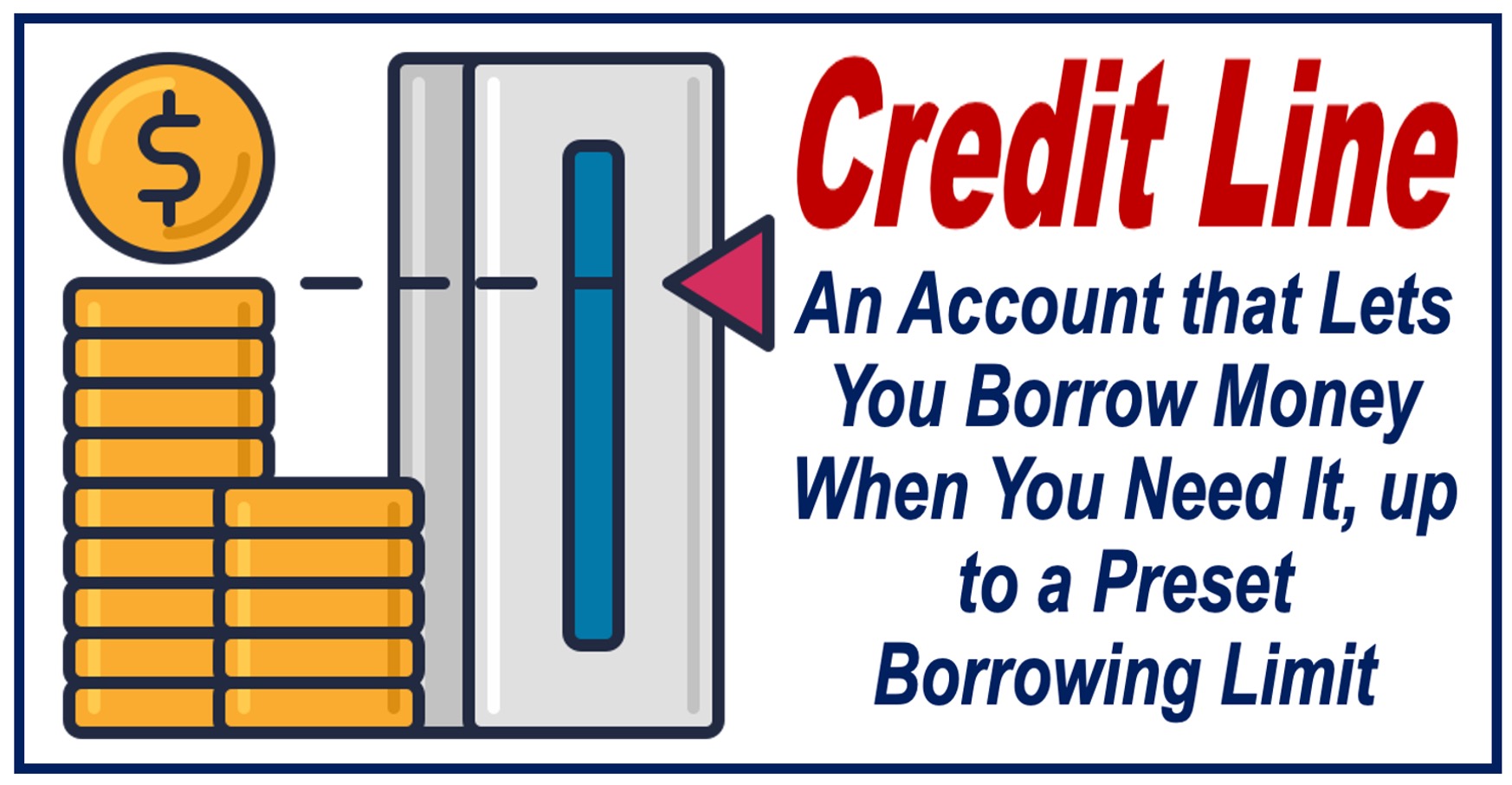A Credit Line is a flexible loan from a bank or financial institution. We often refer to it as a Line of Credit. People do not typically take all the money at once, but rather, borrow from the credit line over time.
In this kind of arrangement, as is the case with an overdraft agreement, you should not go over your limit.
The Government of Canada has the following definition of the term “credit line” (line of credit):
“A type of loan that lets you borrow money up to a pre-set limit. You don’t need to use the funds for a specific purpose. You may use as little or as much of the funds as you like, up to a specified maximum. You may pay back the money you owe at any time. You only pay interest on the money you borrow.”
Credit line vs. overdraft arrangement
An overdraft arrangement or facility applies to your bank account. It means that you can go into “the red” (into debit numbers) up to a certain amount. In other words, you have access to more funds than you have in your account; your bank lets your account balance go into negative numbers temporarily.
A credit line is a type of loan that is not directly attached to your bank account. It is a set amount of money that you can borrow as needed (up to an approved limit). It is a separate account from your regular bank account.
Think of it like a pot of money you can dip into whenever you need to. Whether it’s for fixing a car, paying for schoolbooks, or handling unexpected bills.
With a credit line, you can cover costs without having to take out a whole new loan each time.
How does it work?
Your lender, which is usually a bank, will approve you for a certain amount, say $10,000. We call this amount your credit limit. You might borrow $400 today to pay a bill and perhaps $500 next month for car repairs.
Each time you use the money in your credit line account, your limit is subtracted from the $10,000 by the amount you used.
You only pay interest on the amount you borrow, not the whole $10,000 if you have not used all of it.

Credit line repayments
You can repay the amount you borrowed all at once or over time – terms can be quite flexible. You will have to pay at least the interest each month on any amount you have not repaid.
The facility is available for a set period. When you sign the agreement, check with your lender how long that is.
Secured and unsecured loans
If your credit line is secured, it means that you must pledge (promise) something, such as your house, as security on the loan. If you fail to repay, the bank will have the right to seize that asset. We refer to that asset as collateral.
If you do not have to offer an asset as collateral, your credit line is unsecured, that is, it is an unsecured loan.
Whether you qualify for a secured or unsecured loan depends on your creditworthiness and the amount you wish to borrow. A higher credit score may reduce the likelihood of needing to provide collateral for a loan.
Caution
Since it can be easy to borrow, it may be tempting to use more money than you need. Make sure you only borrow what you can pay back. Keep an eye on your balance so that you do not go over the limit.
Video – What is a Line of Credit?
This video, from our YouTube partner channel – Marketing Business Network, explains what ‘Credit Line’ means using simple and easy-to-understand language and examples.
